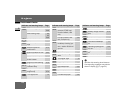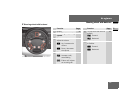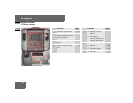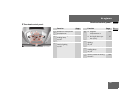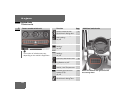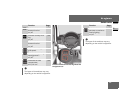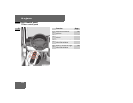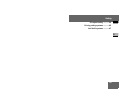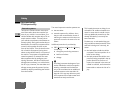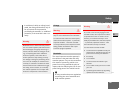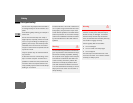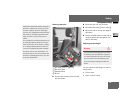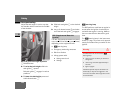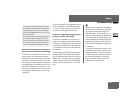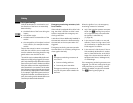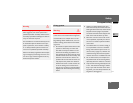
24
Safety
Occupant safety
2
̄ Occupant safety
This section contains all the most impor-
tant information about the restraint sys-
tems in your vehicle. In an accident, your
vehicle collides with another object, for ex-
ample another vehicle. This may cause
your vehicle to accelerate or decelerate ex-
tremely quickly. During this acceleration or
deceleration, the vehicle occupants will be
moved in the opposite direction to the
force of the impact. There is therefore the
risk of vehicle occupants injuring them-
selves on the vehicle interior or on parts of
the vehicle. The purpose of supplemental
restraint systems, for example the seat
belts supplemented by emergency ten-
sioning retractors, belt force limiters and
airbags when necessary, is to minimize the
risk of injury. However, the seat belts and
airbags cannot generally prevent injuries
caused by objects penetrating the vehicle
from the outside.
The most important restraint systems are:
ț the seat belts
ț restraint systems for children, since
they are the most effective means of
reducing the extent to which the occu-
pants are moved in the event of an ac-
cident
Additional protection is provided by:
ț SRS (S
upplemental Restraint System),
comprising:
ț emergency tensioning retractors
ț belt force limiters
ț airbags
Restraint systems
i
An airbag increases the degree of pro-
tection afforded to vehicle occupants
wearing a seat belt and is therefore
only to be considered as an additional
restraint system to the seat belt. Air-
bags do not in any way relieve any vehi-
cle occupants of the need to wear their
seat belt correctly at all times.
This is partly because an airbag is not
activated in all accident situations be-
cause in some cases it would not pro-
vide any additional protection to that
already afforded by a correctly fas-
tened seat belt.
Furthermore, an activated airbag can
only provide increased protection if the
seat belt is being worn correctly, be-
cause:
ț the belt helps to hold the vehicle
occupant in the best position in re-
lation to the airbag
ț the belt prevents the vehicle occu-
pant from being propelled in the op-
posite direction to the force of
impact, for example in the event of
a head-on collision, and is therefore
better able to reduce the risk of in-
jury



